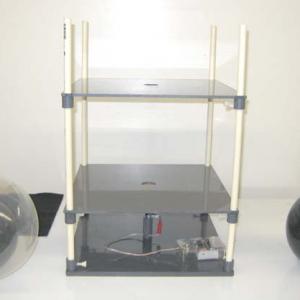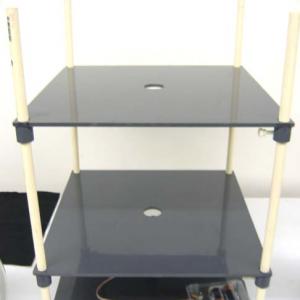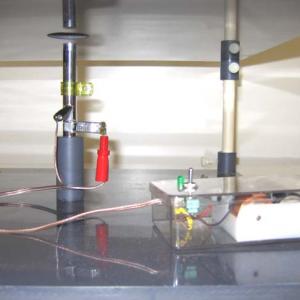College of Liberal Arts & Sciences
10B10.50 - Pop a Balloon
Black balloons from Hobby Lobby work best for this experiment. Blow up one of the balloons. Adjust the top plate of the frame work so that the balloon is held firmly between the top and 2nd plate. It is critical that the balloon is not able to move. Turn on the laser and the balloon should immediately pop.
You can pop a black balloon that has been placed inside a clear balloon to show selective absorption.
NOTE: The laser will put out maximum power for about 5 seconds after it is turned on. After that, power will decrease so dramatically that you will not be able to pop the balloons. So, if the balloon does not pop right away you need to turn off the laser, reposition the balloon, and try again. DO NOT try to pop the balloon by pointing the laser at the thicker part around the neck.
- E. Y. Lukianova-Hleb et al., "Diagnosing Malaria Using Light and Sound", Physics Today, March 2014, p. 21.
- Julien Clinton Sprott, "6.3, Laser Gun", Physics Demonstrations - A Sourcebook for Teachers of Physics, p. 238.
Disclaimer: These demonstrations are provided only for illustrative use by persons affiliated with The University of Iowa and only under the direction of a trained instructor or physicist. The University of Iowa is not responsible for demonstrations performed by those using their own equipment or who choose to use this reference material for their own purpose. The demonstrations included here are within the public domain and can be found in materials contained in libraries, bookstores, and through electronic sources. Performing all or any portion of any of these demonstrations, with or without revisions not depicted here entails inherent risks. These risks include, without limitation, bodily injury (and possibly death), including risks to health that may be temporary or permanent and that may exacerbate a pre-existing medical condition; and property loss or damage. Anyone performing any part of these demonstrations, even with revisions, knowingly and voluntarily assumes all risks associated with them.


